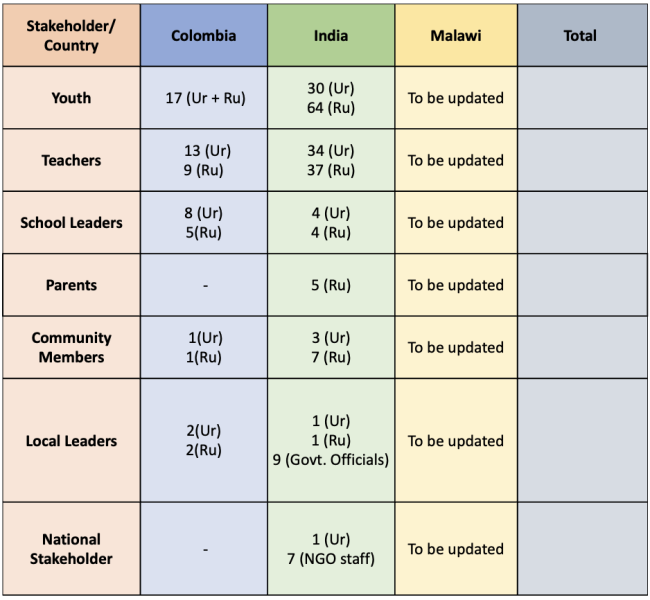Qualitative Approach
For each country the qualitative study component comprised of the following:
· In-depth Institutional study of 2 focal schools
· Research with 8-12 focal students, teachers, parents, and community members in each focal school and surrounding communities
· Interviews with local, national, and international stakeholders and policymakers
· Follow up-interviews with focal students, teachers, and key local leaders.
FOCAL SCHOOLS AND STUDENTS SAMPLE
In each country, we conducted extended research in one rural and one urban secondary school. We collected extensive observational, documentary, and other qualitative data on institutional practices and conducted interviews with local and school officials, teachers, school leaders, and students. We also followed eight to 12 diverse focal youth in each school over the course of their first two years (grades 9-10 in India and Malawi, grades 10-11 in Colombia).
NATIONAL AND INTERNATIONAL STAKEHOLDERS SAMPLE
In each country we conducted semi-structured interviews with local, national, and international education and labor officials. Interviewees were selected because of their public involvement in secondary school policy discussions about relevance, and/or in educational policy and practice directed at marginalized youth
The table below provides the number of interviews conducted in each country for the different stakeholders for the project:

The table below provides the number of focus group discussions conducted in each country:

